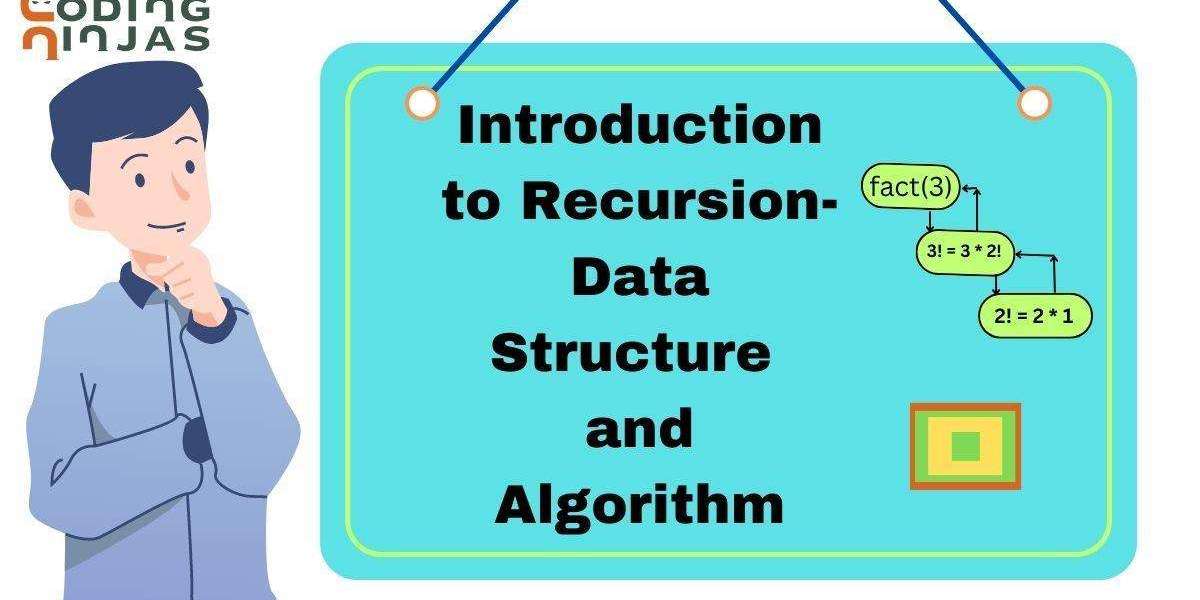When learning about algorithms and programming, one concept that often seems tricky at first but is extremely powerful is recursion in data structure. Recursion is widely used to solve problems that can be broken down into smaller, repetitive sub-problems. From mathematical computations to traversing trees and graphs, recursion makes problem-solving elegant and efficient. In this blog, we’ll explore the concept, its types, and real-world examples to help you master recursion.
What is Recursion in Data Structure?
In simple terms, recursion in data structure is a process where a function calls itself directly or indirectly until a specific condition is met. Each recursive call reduces the problem into smaller instances of the same problem, and once the base condition is reached, the calls start resolving in reverse order.
For example, calculating the factorial of a number is a classic recursive problem:
Here, the function keeps calling itself with smaller inputs until it reaches the base case (0).
Why Use Recursion in Data Structure?
Recursion offers several advantages in solving complex problems:
Simplifies code: Problems like traversing a binary tree or solving a maze can be written in fewer lines with recursion.
Natural representation: Recursive solutions often mirror the way problems are defined mathematically.
Efficiency in problem-solving: Algorithms such as quicksort and mergesort are recursive by nature and are much faster compared to naive approaches.
Types of Recursion in Data Structure
Understanding the types of recursion helps in applying them effectively. The main types include:
Direct Recursion
A function calls itself directly.
Example: Calculating factorial or Fibonacci numbers.
Indirect Recursion
A function calls another function, which in turn calls the original function.
Example: Function A → Function B → Function A.
Tail Recursion
The recursive call is the last statement in the function.
This is memory efficient because compilers can optimize it by reusing stack frames.
Non-Tail Recursion
The recursive call is followed by additional operations.
Example: Factorial calculation, where multiplication happens after the recursive call.
Real-World Examples of Recursion in Data Structure
Factorial of a Number
This is a simple case of direct recursion.
Fibonacci Sequence
Used in dynamic programming and optimization problems.
Binary Tree Traversal
Recursion is essential in performing inorder, preorder, and postorder traversal in trees. For instance:Tower of Hanoi Problem
A famous puzzle where recursion solves the challenge of moving disks between rods with minimal moves.Divide and Conquer Algorithms
Sorting algorithms like mergesort and quicksort heavily rely on recursion for dividing and solving sub-problems.
Advantages and Limitations
Advantages:
Cleaner and shorter code for complex problems.
Easier to implement solutions for hierarchical data like trees and graphs.
Limitations:
Excessive recursion can lead to stack overflow errors.
Iterative solutions may be more memory-efficient in some cases.
Conclusion
Mastering recursion in data structure is essential for every programmer. It provides a strong foundation for solving complex problems efficiently, especially in algorithms and hierarchical data structures. By understanding its types and practicing with examples like factorial, Fibonacci, and tree traversal, you can apply recursion confidently in real-world coding challenges.
Whether you are preparing for coding interviews or working on advanced projects, a clear grasp of recursion in data structure will give you a significant advantage in writing optimized and elegant code.



